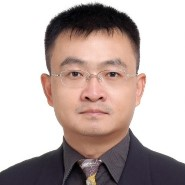Current Research in Organic Optoelectronic Nanomaterials, Semiconductors and Devices
A special issue of Nanomaterials (ISSN 2079-4991). This special issue belongs to the section "Nanoelectronics, Nanosensors and Devices".
Deadline for manuscript submissions: closed (30 June 2022) | Viewed by 2715
Special Issue Editor
Special Issue Information
Dear Colleagues,
Nanomaterials and Nanotechnology have played a pivotal role in driving the continuous development of optoelectronic technologies, which include organic optoelectronic applications. Due to the superior optical, electrical, and optoelectrical properties, an increasing amount of scholarly research has been undertaken on optoelectronic nanomaterials and their applications. Recently, new organic optoelectronic materials and devices have been rapidly developed for practical applications, including organic solar cells, photodetectors, light-emitting devices (LEDs), phototransistors, etc.
This Special Issue will present current research in organic optoelectronic nanomaterials and devices, from the theory, design, synthesis, and characterization of novel organic nanomaterials, as well as the performance, characterization, and application of nanodevices in chemistry, physics, and engineering.
In this Special Issue, original research articles and reviews are welcome. Research areas may include (but are not limited to) the following:
- Synthesis and preparation of organic nanomaterials;
- Optical, electrical, and optoelectrical properties of organic nanomaterials;
- Applications of optoelectronic nanomaterials and devices such as solar cells, detectors, LEDs, sensors etc.
We look forward to receiving your contributions.
Prof. Dr. Shuai Wang
Guest Editor
Manuscript Submission Information
Manuscripts should be submitted online at www.mdpi.com by registering and logging in to this website. Once you are registered, click here to go to the submission form. Manuscripts can be submitted until the deadline. All submissions that pass pre-check are peer-reviewed. Accepted papers will be published continuously in the journal (as soon as accepted) and will be listed together on the special issue website. Research articles, review articles as well as short communications are invited. For planned papers, a title and short abstract (about 100 words) can be sent to the Editorial Office for announcement on this website.
Submitted manuscripts should not have been published previously, nor be under consideration for publication elsewhere (except conference proceedings papers). All manuscripts are thoroughly refereed through a single-blind peer-review process. A guide for authors and other relevant information for submission of manuscripts is available on the Instructions for Authors page. Nanomaterials is an international peer-reviewed open access semimonthly journal published by MDPI.
Please visit the Instructions for Authors page before submitting a manuscript. The Article Processing Charge (APC) for publication in this open access journal is 2900 CHF (Swiss Francs). Submitted papers should be well formatted and use good English. Authors may use MDPI's English editing service prior to publication or during author revisions.
Keywords
- organic optoelectronic nanomaterials
- organic semiconductors
- organic nanodevices
- organic solar cells
- organic photodetectors
- organic light-emitting devices (OLEDs)
- organic phototransistors






